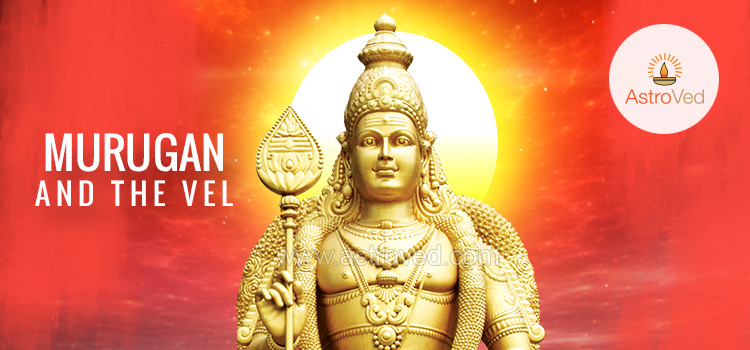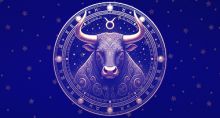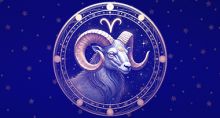The Power of Vel: Muruga's Divine Weapon
Lord Murugan and his Vel
As everyone knows, Lord Murugan is the son of Lord Shiva and Goddess Parvati. He is also the brother of the Elephant God — Ganesha. However, some of us may not be familiar with the origin and individual implications of the Divine Lance or ‘Vel’ that Murugan wields. Legend states that when Lord Shiva was separated from his consort, Goddess Uma, he retreated to a life of Tapas and meditation. Before doing so, he granted certain boons to the Asuras (Demons) — Surapadman, Singhamukhan and Tarakasuran. The demon Surapadman was blessed with eternal life and he would get to be the overlord of most of the worlds in the universe. These Asuras were born as a result of the union of the great sage Kashyapar and ‘Mayai’, the daughter of the Asura king ‘Akhiresa’. Though the sage brought them up to be righteous and virtuous, his wife thought otherwise and indoctrinated them with the idea that the material world was all important, and power and wealth was all that mattered. The disillusioned sage resigned himself to this fact and retreated to the forest to resume his penance.
Mayai instructed her children to perform tapas to Lord Shiva and secure his blessings to acquire the power which would allow them to conquer and rule the world and the heavens. The brothers were successful and returned to their mother, where they were put under the guidance of ‘Sukracharya’ the preceptor of the Asuras. All these austerities emboldened the brothers and they set out to achieve their objective of conquering the world, which they easily accomplished due to their immense powers and the boon of Lord Shiva.
This upset the cosmic order and the subjugated Devas turned to Lord Brahma and Lord Vishnu for guidance, who advised them to approach Lord Shiva. The hapless Devas appealed to Lord Shiva to marry Parvati and beget a child who would relieve them of their misery.
The ever merciful Shiva was moved by their plight and immediately assumed five additional heads, each of which emitted a divine spark. Immediately, Agni the fire God carried the sparks and deposited them in the waters of the River Ganga. The heat from the sparks was so intense that Ganga in turn transported the fiery sparks to Lake Saravana. Each divine spark developed into a baby boy and was individually guarded by the six Pleiades maidens called ‘Kritikas’.
As providence would have it, it was at this point that Parvati’s anklet broke and each of the nine jewels in her anklet reflected her image in the waters of the lake. When Shiva’s glance fell upon these ‘Sakthis’, each of these assumed an individual form and were impregnated with his divine powers. Each Sakthi then went on to produce a son, all nine of which were to become the generals of Lord Murugan’s celestial army.
Meanwhile, the six sparks who transformed into six babies, rushed to Parvati, who embraced them lovingly. Immediately, the six were fused into one single being with six heads and 12 arms, the form of Murugan which is worshipped even today as ‘Shanmugham’ or ‘Arumugam’ (six-headed one).
The heavens erupted with joy and the Devas rejoiced, as they knew that deliverance was at hand. This divine child was endowed with extraordinary powers and was soon to become the bane of the Asuras.
They approached Shiva and Parvati, and requested them to send their son to overthrow the demon brothers. It was at this moment that Goddess Parvati presented the Divine Lance known as the ‘Vel’ to Murugan. This mighty Lance was invested with the powers of all the Gods and no force in the Universe could withstand its onslaught. As Murugan and his army set out to overthrow the demons, they encountered a powerful Asura called ‘Kraunchan’ who assumed the form of a huge mountain to block their path.
Undeterred, Murugan hurled the mighty Vel at the mountain and destroyed it in a single stroke. They soon set upon the Asura army and wreaked havoc in its ranks. For six days and six nights, the battle raged, with both sides equally matched. The desperate Asuras propitiated Goddess Bhadrakali and pleaded with her to intervene. However, when she saw who was leading the Divine army, she merely smiled and withdrew.
On the sixth day, Murugan entered the battlefield and confronted the powerful Surapadman. Realizing that Murugan was none other than the divine child of Shiva and Parvati, Surapadman resorted to trickery and attempted to extricate himself from sure defeat. However, Murugan thwarted all his attempts.
As the battle was drawing to an end, Surapadman made a last ditch attempt to trick Murugan, who immediately resumed the divine form of Shanmugham (one with six faces and 12 arms). Out of desperation, Surapdman assumed the form of a gigantic monster with a thousand arms and a thousand legs.
Murugan smiled and hurled his Vel at Surapadman which split the terrible Asura into two. Surapadman then assumed the form of a huge mango tree which threatened to smother the world. Undeterred, Murugan split the tree into pieces with his mighty lance, whereupon Surapadman assumed the form a peacock and a rooster. Just a single glance of Murugan was enough to tame these creatures and they meekly submitted to his might. The merciful Murugan then declared that the rooster would henceforth serve as his ‘Vahana’ (mount), and the peacock would become his emblem and adorn his flag. Surapadman was immortalized for eternity, in keeping with Shiva’s boon that he would enjoy perennial life.
Murugan’s role in religion and spirituality is not just restricted to this episode alone. He signifies the importance of spiritual evolution and guides in conquering our basic instincts to evolve into a higher plane of existence. Once an individual reaches a certain stage of spiritual awareness, the desire to establish a divine relationship with the Supreme Being overtakes everything else and leads one to the path of Truth.
Though Surapadman and his brothers were born to an illustrious and learned father, wrongful guidance led them to succumb to their animal instincts.
This symbolizes the need for using our intelligence to shun ego, hatred and selfishness, and instead strive for liberation from material comforts.
The Vel or Murugan symbolizes the ultimate power of Shakti (Parashakti), which dispels all illusion and helps to view everything in a rational manner. It also exemplifies the importance of pursuing pure spiritual knowledge to attain liberation and oneness with the Supreme.
Murugan’s divine exploits are celebrated as festivals in all major temples. His victory over Surapadman is observed as a six-day festival of ‘Skanda Shasti’ or ‘Kantha Sashti’ in the Tamil month of ‘Aispaasi’ (October–November). The day Goddess Parvati bestowed the Divine Vel to Murugan is celebrated on the full moon day in the Tamil month of ‘Thai’ (January–February). This occasion is observed in a grand manner in Hindu temples across the world as ‘Thai Poosam’.
Though the sage brought them up to be righteous and virtuous, his wife thought otherwise and indoctrinated them with the idea that the material world was all important, and power and wealth was all that mattered. The disillusioned sage resigned himself to this fact and retreated to the forest to resume his penance.
Mayai instructed her children to perform tapas to Lord Shiva and secure his blessings to acquire the power which would allow them to conquer and rule the world and the heavens. The brothers were successful and returned to their mother, where they were put under the guidance of ‘Sukracharya’ the preceptor of the Asuras. All these austerities emboldened the brothers and they set out to achieve their objective of conquering the world, which they easily accomplished due to their immense powers and the boon of Lord Shiva.
This upset the cosmic order and the subjugated Devas turned to Lord Brahma and Lord Vishnu for guidance, who advised them to approach Lord Shiva. The hapless Devas appealed to Lord Shiva to marry Parvati and beget a child who would relieve them of their misery.
The ever merciful Shiva was moved by their plight and immediately assumed five additional heads, each of which emitted a divine spark. Immediately, Agni the fire God carried the sparks and deposited them in the waters of the River Ganga. The heat from the sparks was so intense that Ganga in turn transported the fiery sparks to Lake Saravana. Each divine spark developed into a baby boy and was individually guarded by the six Pleiades maidens called ‘Kritikas’.
As providence would have it, it was at this point that Parvati’s anklet broke and each of the nine jewels in her anklet reflected her image in the waters of the lake. When Shiva’s glance fell upon these ‘Sakthis’, each of these assumed an individual form and were impregnated with his divine powers. Each Sakthi then went on to produce a son, all nine of which were to become the generals of Lord Murugan’s celestial army.
Meanwhile, the six sparks who transformed into six babies, rushed to Parvati, who embraced them lovingly. Immediately, the six were fused into one single being with six heads and 12 arms, the form of Murugan which is worshipped even today as ‘Shanmugham’ or ‘Arumugam’ (six-headed one).
The heavens erupted with joy and the Devas rejoiced, as they knew that deliverance was at hand. This divine child was endowed with extraordinary powers and was soon to become the bane of the Asuras.
They approached Shiva and Parvati, and requested them to send their son to overthrow the demon brothers. It was at this moment that Goddess Parvati presented the Divine Lance known as the ‘Vel’ to Murugan. This mighty Lance was invested with the powers of all the Gods and no force in the Universe could withstand its onslaught. As Murugan and his army set out to overthrow the demons, they encountered a powerful Asura called ‘Kraunchan’ who assumed the form of a huge mountain to block their path.
Undeterred, Murugan hurled the mighty Vel at the mountain and destroyed it in a single stroke. They soon set upon the Asura army and wreaked havoc in its ranks. For six days and six nights, the battle raged, with both sides equally matched. The desperate Asuras propitiated Goddess Bhadrakali and pleaded with her to intervene. However, when she saw who was leading the Divine army, she merely smiled and withdrew.
On the sixth day, Murugan entered the battlefield and confronted the powerful Surapadman. Realizing that Murugan was none other than the divine child of Shiva and Parvati, Surapadman resorted to trickery and attempted to extricate himself from sure defeat. However, Murugan thwarted all his attempts.
As the battle was drawing to an end, Surapadman made a last ditch attempt to trick Murugan, who immediately resumed the divine form of Shanmugham (one with six faces and 12 arms). Out of desperation, Surapdman assumed the form of a gigantic monster with a thousand arms and a thousand legs.
Murugan smiled and hurled his Vel at Surapadman which split the terrible Asura into two. Surapadman then assumed the form of a huge mango tree which threatened to smother the world. Undeterred, Murugan split the tree into pieces with his mighty lance, whereupon Surapadman assumed the form a peacock and a rooster. Just a single glance of Murugan was enough to tame these creatures and they meekly submitted to his might. The merciful Murugan then declared that the rooster would henceforth serve as his ‘Vahana’ (mount), and the peacock would become his emblem and adorn his flag. Surapadman was immortalized for eternity, in keeping with Shiva’s boon that he would enjoy perennial life.
Murugan’s role in religion and spirituality is not just restricted to this episode alone. He signifies the importance of spiritual evolution and guides in conquering our basic instincts to evolve into a higher plane of existence. Once an individual reaches a certain stage of spiritual awareness, the desire to establish a divine relationship with the Supreme Being overtakes everything else and leads one to the path of Truth.
Though Surapadman and his brothers were born to an illustrious and learned father, wrongful guidance led them to succumb to their animal instincts.
This symbolizes the need for using our intelligence to shun ego, hatred and selfishness, and instead strive for liberation from material comforts.
The Vel or Murugan symbolizes the ultimate power of Shakti (Parashakti), which dispels all illusion and helps to view everything in a rational manner. It also exemplifies the importance of pursuing pure spiritual knowledge to attain liberation and oneness with the Supreme.
Murugan’s divine exploits are celebrated as festivals in all major temples. His victory over Surapadman is observed as a six-day festival of ‘Skanda Shasti’ or ‘Kantha Sashti’ in the Tamil month of ‘Aispaasi’ (October–November). The day Goddess Parvati bestowed the Divine Vel to Murugan is celebrated on the full moon day in the Tamil month of ‘Thai’ (January–February). This occasion is observed in a grand manner in Hindu temples across the world as ‘Thai Poosam’.

Leave a Reply
Ram Prathap kumar
Appreciate your efforts, but you got one thing wrong. Rooster is not his vahana, but the peacock and the rooster, his emblem.
March 15, 2019
Sales
Namaste Ram JI,
Thanks you for your valuable feedback.
Actually Rooster is a symbol that represents Victory where Lord Muruga conquered Soorabathman and changed him as Rooster as his Victory symbol.
Peacock is Vahana as per historical purana.
With Regards,
Astroved member support.
May 27, 2019


















